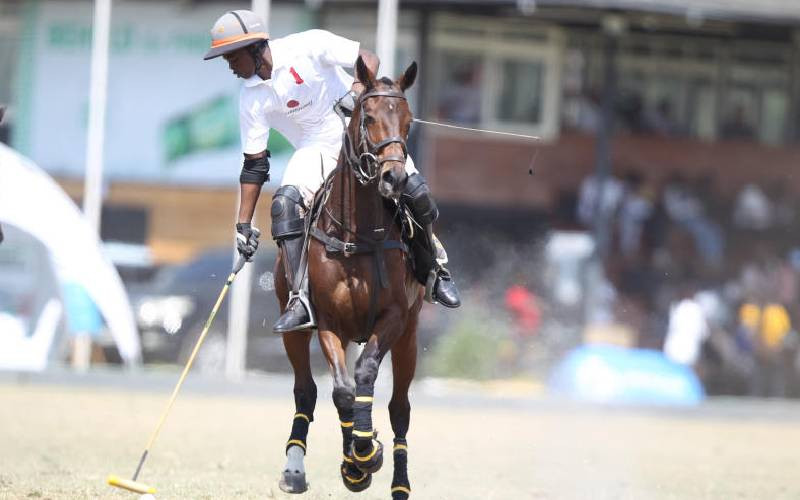Morendat Polo player Amani Nzomo playing The Connaught Cup beating NPC 6-4 at The Nairobi Polo Club, Jamhuri Park, in Nairobi, on July 27, 2025. [Jonah Onyango, Standard]
Kenya appears to have mastered the art of winning matches against their international competitors this season.
And their winning streak was achieved when Kenya Shujaa overcame Zambia in the round-robin matches to lift the Swinburn Trophy at Manyatta Polo Club in Gilgil, over the weekend.
In their last match of the three-day competition, Kenya Shujaa settled for a five-all-draw against Zambia that ensured they collected maximum six points to emerge victorious.
The team of Archie Voorspuy, Harry Stichbury, Amani and Hiromi Nzomo was a good joy to watch, with Voorspuy scoring all the five goals from assists through Amani and Hiromi in the fight for top honours.
“It was a tough match and the competition was tough, tougher than last year. But it was a good experience,” Amani told Standard Sports.
The Nzomos, whose excellent performance last season led to their handicap promotion, have been in top shape.
On the Zambian side, it was Jake Coventry who scored four times, with Damien Harris only managing one, in the four chukkas.
Zambian captain Tristan Clayton paid a glowing tribute to Kenyan players for the warm reception and use of their horses. By Ben Ahenda | The Standard






